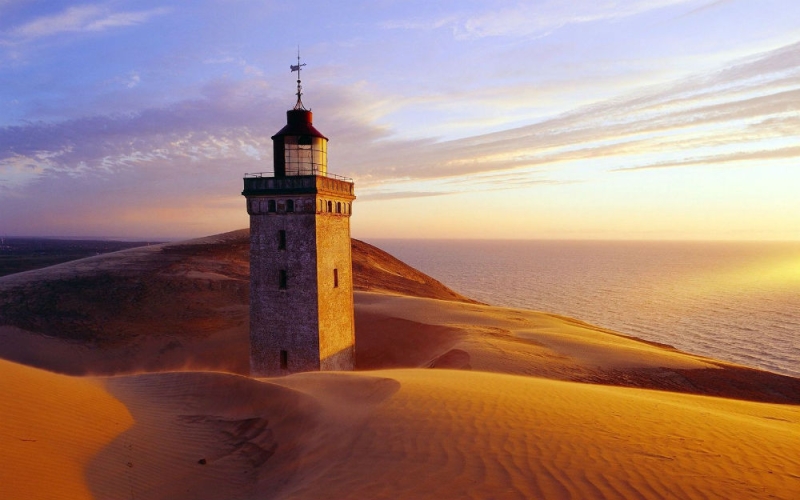
People living on the coast treat lighthouses with trepidation. Perhaps because the huge towers do not just send light into the sea, but give sailors hope and help avoid death. Today we will talk about five lighthouses with a difficult fate that you can visit when traveling around Europe and the USA.
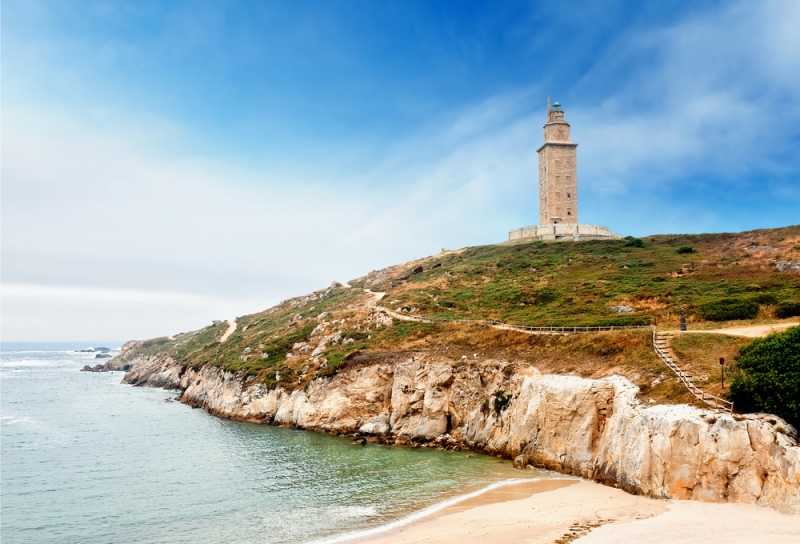
Tower of Hercules (on the map)
Country: Spain
Lighthouse height: 55 meters
Rock height: 57 meters
In the north of the city of La Coruña in Spain stands the oldest working lighthouse in the world. The tower on the shores of the Atlantic Ocean was built by the Romans at the beginning of the 2nd century AD under Emperor Trajan. The architect was an engineer named Kai Servius Lupo. If he had known that two thousand years later his structure would remain the only functioning Roman lighthouse, he would probably have been very surprised.
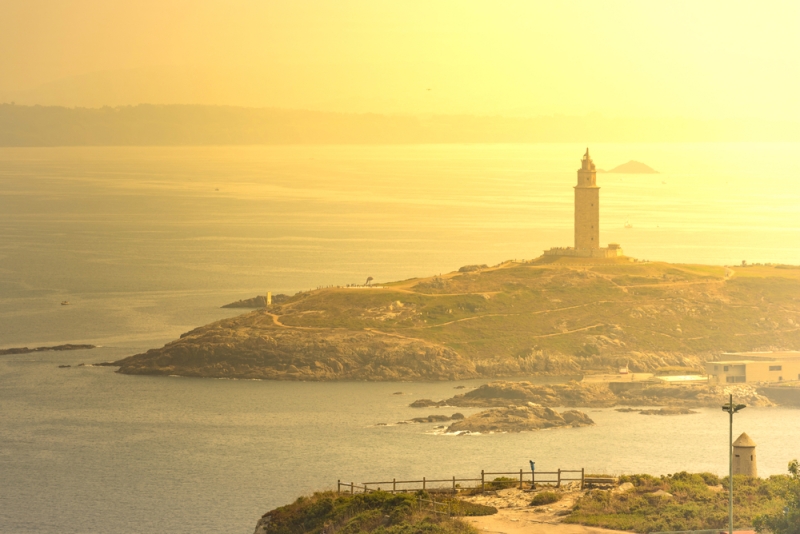
In the Middle Ages, due to endless wars, the Atlantic trade routes were empty, and the lighthouse ceased to serve as a signal and became a fortification. Archaeologists have found remains of walls around the tower. It is known that in 843, near the lighthouse, a battle took place between the army of the Asturian kingdom led by Ramiro I and the Vikings who tried to land on the coast. That time the victory remained with the kingdom.
Between 1682 and 1791, the Spaniards made several attempts to restore the lighthouse: they added one floor, built a new staircase, and made cladding. This is how the tower acquired its current appearance and began to be used for its intended purpose again.
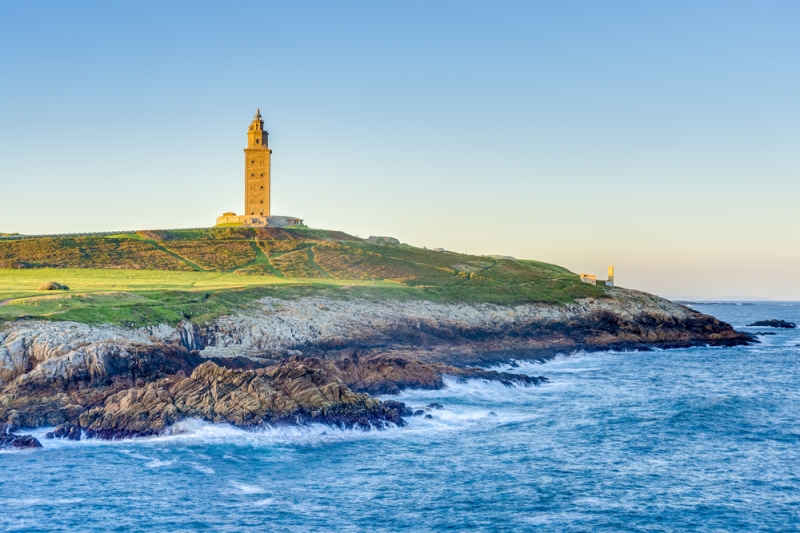
The lighthouse is often called the Tower of Hercules. The reason is that the Castilian king Alfonso X in his book “Cronica General” created a legend that the building was built by Hercules after his tenth labor. According to legend, that time he defeated Geryon, a giant from the island of Erithia. The myth took root and was actively promoted. And so it turned out that the old Roman lighthouse bears the name of the ancient Greek hero.
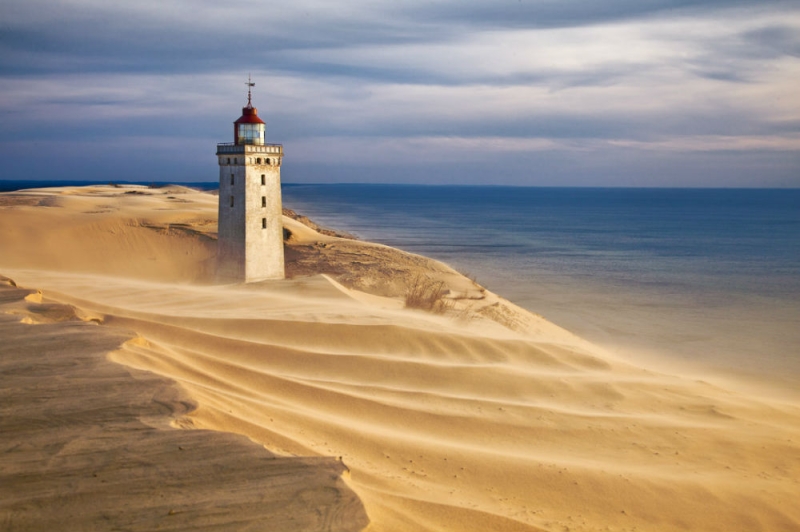
Rubjerg Knud Lighthouse (on the map)
Country: Denmark
Lighthouse height: 23 meters
Rock height: 60 meters
In northern Denmark, the Rubjerg Knud lighthouse has stood for 116 years. Its whole story is a struggle with the elements, but the sea has nothing to do with it. The main danger for the lighthouse was the wind. He brings sand from the cliff and fills up the tower and several buildings around it.
Local authorities made several attempts to save the lighthouse. By their order, the area around was sowed with grass and bushes, and wooden fences of unusual shapes were erected near the buildings. It did not help. Over the years, there was more and more sand around. It got to the point that a sand dune blocked the light from the lighthouse.
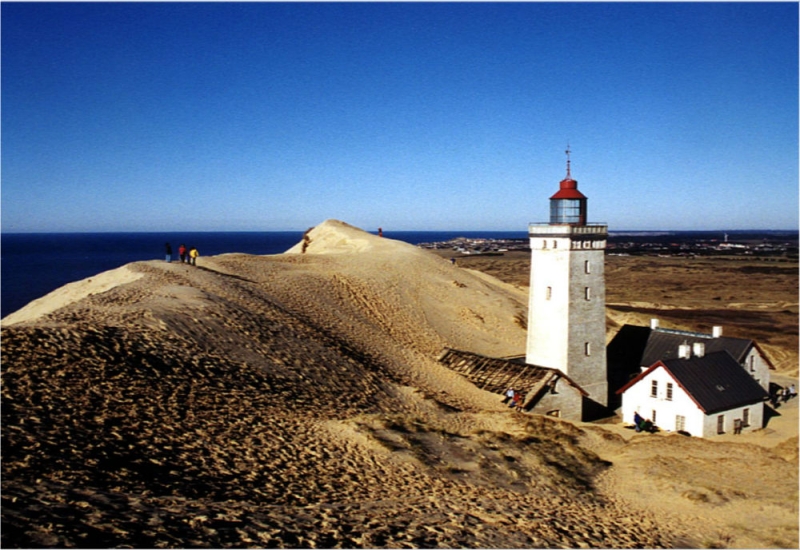
In early August 1968, the authorities surrendered. The wind turned out to be stronger. Mountains of sand appeared around the lighthouse, and it became too expensive to maintain it. It stopped working, but turned into a popular attraction. At one time, there was even an exposition for tourists and a cafe in the utility buildings next to the tower. This was the case until 2002, after which it became impossible to use the premises.

Today the Rubjerg Knud lighthouse stands in a large hole, surrounded by dunes. Sand is constantly removed. According to scientists, if this is not done, then in 15 years the tower will be completely covered.
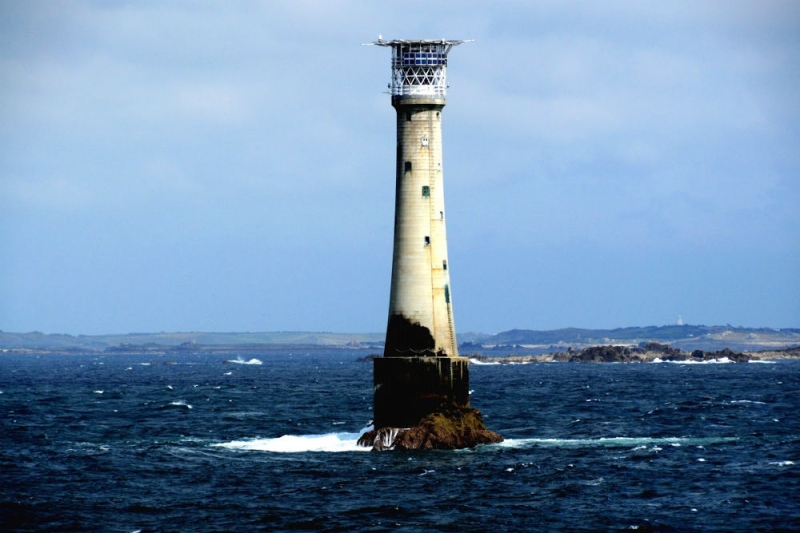
Bishop Rock Lighthouse (on the map)
Country: UK
Lighthouse height: 49 meters
Rock height: 2 meters
The Guinness Book of World Records says Bishop Rock is the smallest built-up island on the planet. Its dimensions are only 16 by 46 meters. For a long time this rock was also considered the westernmost point of England, but then another ledge was found five hundred meters to the west and the title passed to it.
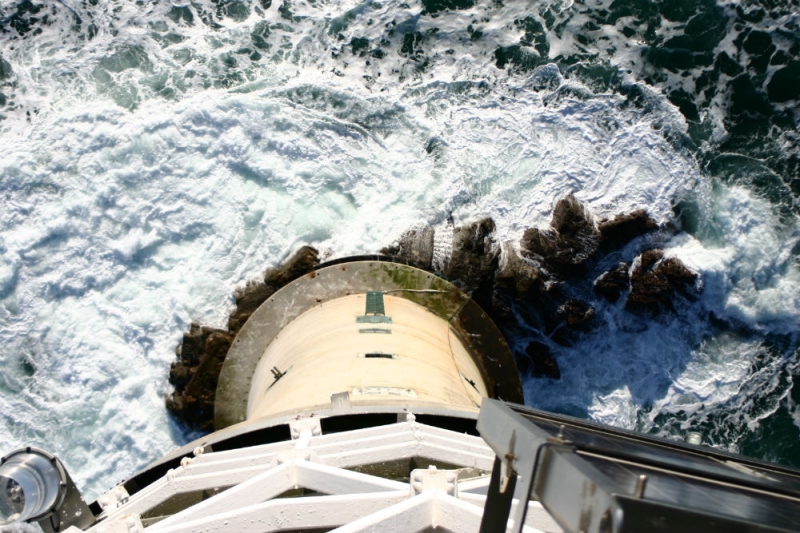
The British authorities began to think about the need for a lighthouse on Bishop Rock after a major shipwreck that occurred near the island on October 22, 1707. On that day, a military squadron under the command of Admiral Shovel was returning to Portsmouth after the siege of French Toulon and ran into rocks. The official reasons for the tragedy are a storm and a navigation error. As a result of the disaster, four ships sank; another damaged ship was saved. Two thousand sailors and the admiral himself died.
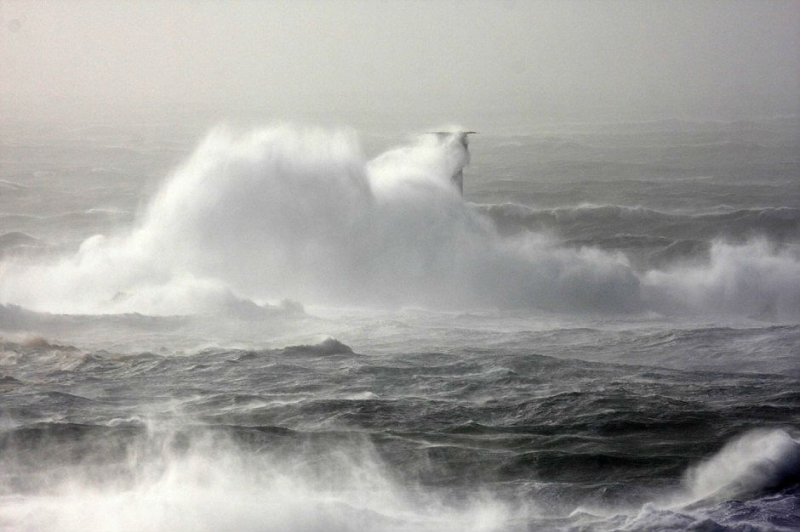
140 years passed after the death of the squadron before a lighthouse appeared on Bishop Rock Island. The construction was led by Scotsman James Walker. The first attempt failed. The engineer made a mistake in his calculations, so the storm washed the tower into the water. I had to start over. Walker completely reworked the project: changed the design, selected other materials and strengthened the foundation with granite slabs. It worked. In September 1858, the Bishop Rock Lighthouse sent its first signal out to sea.
At first, the new lighthouse did not change the situation on the coast much. Already in 1875, a second major tragedy occurred nearby – the sailing steamer Schiller crashed against the rocks. 335 people died.
In 1992, the lighthouse was fully automated. Now you can look at the tower in two ways: take a tour by boat or by helicopter. The first option is cheaper, the second allows you to visit the interior of the lighthouse. Both excursion routes start from cities in the Scilly Archipelago.
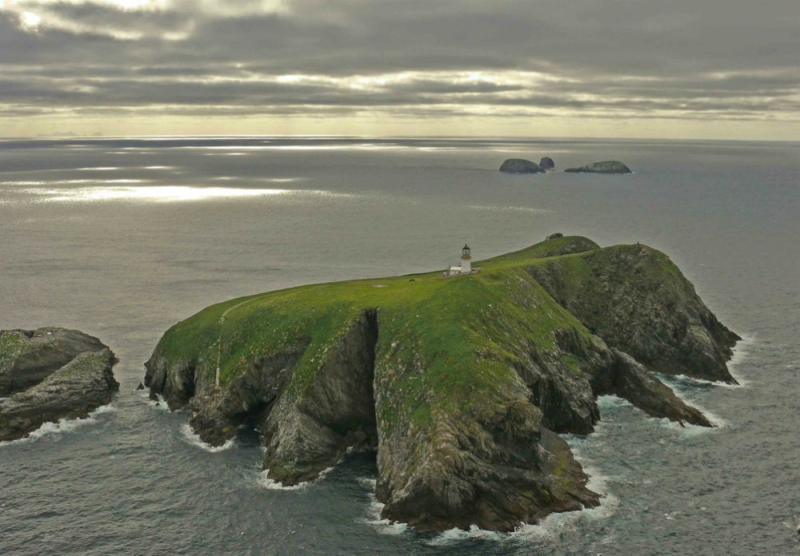
Eilean Mor Lighthouse (on the map)
Country: UK
Lighthouse height: 23 meters
Rock height: 85 meters
Lost off the coast of Scotland, the lighthouse is popular among paranormal hunters. It’s all because of a strange story that happened here 126 years ago.
A year after the opening of the lighthouse on the Flannan Islands, its staff consisted of 4 people. Three were on duty in a tower on a small uninhabited island, and one caretaker was resting in a nearby village at that time.
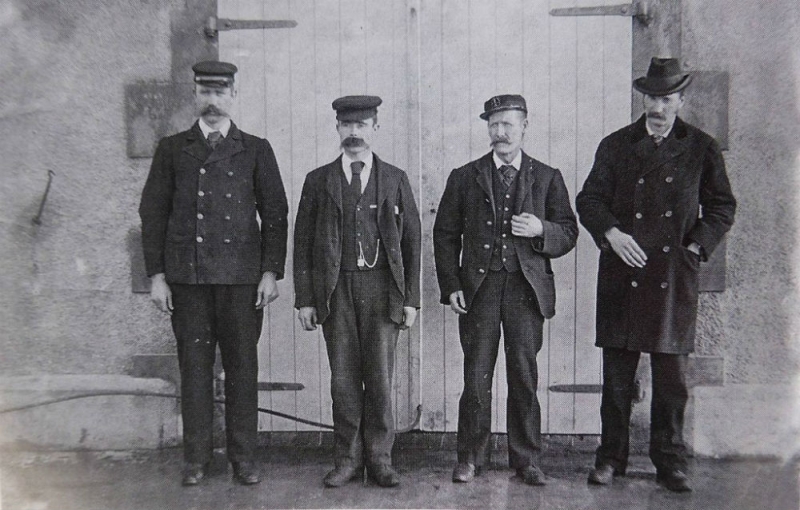
Crew Brigade
It all started on December 15, 1900. That day, the Arctor steamship passed near the lighthouse. The ship’s crew discovered that the tower was not giving a signal. Arriving at the port, the captain reported what had happened. There was no connection with the lighthouse. There was a storm at sea, so the first ship was able to reach the island only 10 days later.
Arriving at the site, the team of inspectors discovered a strange picture: the island was empty, the doors were locked, the beds were made, the dishes were washed. All raincoats are in place. The only thing that caught my eye was the overturned table.
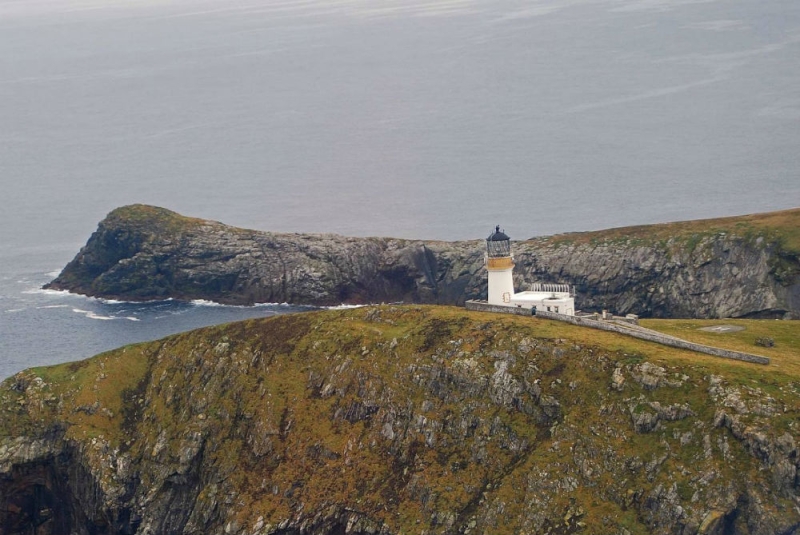
The last entry in the journal was dated December 15, 1900. According to the document, from the 12th to the 14th, a storm raged around the island, the likes of which the keepers had never seen before. Only by the morning of December 15th the sea calmed down, as the recording reported. The strange thing was that not a single weather station nearby recorded bad weather at this time.
The bodies of the caretakers were never found. Naturally, rumors immediately began to spread. Various versions have been put forward: from otherworldly intervention to collective suicide. The official commission suggested that people were washed away by the wave, but not everyone found this explanation convincing. Conspiracy theories surrounding the disappearance of the caretakers in 1900 continue to appear occasionally in the press.

Statue of Liberty (on map)
Country: USA
Lighthouse height: 93 meters
Rock height: 1 meter
The last on our list is the most famous lighthouse in the world – the American Statue of Liberty. It stands on a small island 3 kilometers from Manhattan in New York. Ironically, as a beacon, the monumental sculpture did not justify itself at all.
In the early years, the U.S. Lighthouse Administration was responsible for operating the statue. The sculpture served as a guide for incoming ships, since every evening the caretaker lit its torch. This went on for 16 years. During this time, it became clear that the lighthouse from the Statue of Liberty was useless – the light was barely visible even from Manhattan. Engineers offered various options for improving the design: from installing new equipment to covering the Statue of Liberty with gold to make it shine brighter. City authorities rejected all projects, largely due to lack of funds.
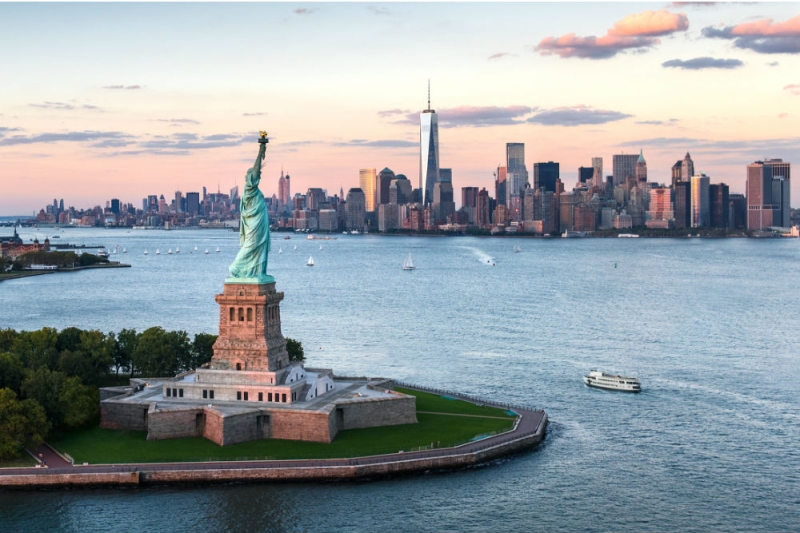
There was even an initiative to move the sculpture to the mainland and install it near the Military Department, but immigrants intervened. It turned out that over time, the Statue of Liberty has acquired symbolic meaning for many New Yorkers. The fact is that it was she who was the first to welcome guests from the Old World. According to the recollections of the settlers, the sight of the statue inspired hope for a favorable outcome of the move. The fate of the sculpture was finally decided by the outcome of the First World War. Agitators placed the Statue of Liberty on posters and leaflets, which cemented its image in the minds of US citizens as a clear visualization of American values.
If you are looking for a place to stay while traveling, we recommend booking a hotel on OneTwoTrip.

